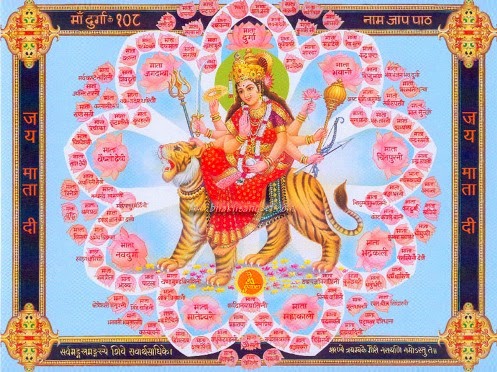Navratri, the festival of nights, lasts for 9 days with three days each devoted to worship of Maa Durga, the Goddess of Valor, Maa Lakshmi, the Goddess of Wealth and Maa Saraswati, the Goddess of Knowledge. During the nine days of Navratri, feasting and fasting take precedence over all normal daily activities amongst the Hindus. Evenings give rise to the religious dances in order to worship Goddess Durga Maa. The festival is celebrated with true devotion and purity all over the country. People from various sections of the society irrespective of caste and creed celebrate this festival by visiting temples and offering pujas at the Mother’s feet.
1st - 3rd day of Navratri
On the first day of the Navaratras, a small bed of
mud is prepared in the puja room of the house and barley seeds are sown on it.
On the tenth day, the shoots are about 3-5 inches in length. After the puja,
these seedlings are pulled out and given to devotees as a blessing from God.
These initial days are dedicated to Durga Maa, the Goddess of power and energy.
Her various manifestations, Kumari, Parvati and Kali are all worshipped during
these days. They represent the three different classes of womanhood that
include the child, the young girl and the mature woman.
4th - 6th day of Navratri
During these days, Lakshmi Maa, the Goddess of
peace and prosperity is worshipped. On the fifth day which is known as Lalita
Panchami, it is traditional, to gather and display all literature available in
the house, light a lamp or 'diya' to invoke Saraswati Maa, the Goddess of
knowledge and art.
7th - 8th day of Navratri
These
final days belong to Saraswati Maa who is worshipped to acquire the spiritual
knowledge. This in turn will free us from all earthly bondage. But on the 8th
day of this colourful festival, yagna (holy fire) is performed. Ghee (clarified
butter), kheer (rice pudding) and sesame seeds form the holy offering to
Goddess Durga Maa.
Mahanavami
The
festival of Navratri culminates in Mahanavami. On this day Kanya Puja is
performed. Nine young girls representing the nine forms of Goddess Durga are
worshiped. Their feet are washed as a mark of respect for the Goddess and then
they are offered new clothes as gifts by the worshiper. This ritual is
performed in most parts of the country.























